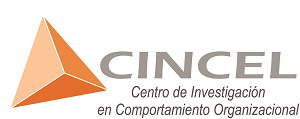Un estudio comparativo de los rumores y chismes organizacionales, el engagement y las generaciones en el sector laboral en Puerto Rico
Resumen
Palabras clave
Texto completo:
PDFReferencias
Abdul Manaf, M.M., Ghani, E.K., & Mohamed Jais, I.R. (2013). Gossip Has It! An in Depth Investigation of Malaysian Employees on Gossip Activities at Workplace, Canadian Social Science, 9(4), 34-44. doi: 10.3968/j.css.1923669720130904.5789
Aertsen, T. & Gelders, D. (2012). Differences between the Public and Private Communication of rumor. A pilot survey in Belgium. Public Relations Review, 37(3), 281-291. http://dx.doi.org/10.1016/j.pubrev.2011.03.009
Allport, G.W., & Postman, L. J. (1947). The Psychology of Rumor. New York: Holt, Rinehart & Winston.
Back, K., Festinger, L., Hymovith, B., Kelly, H. Schachter, S., & Thibaut, J. (1950). The methodology of studying rumor transmission. Human Relations, 3, 307-312.
Bakker, A.B., Schaufeli, W.B., Leiter, M.P., & Taris, T.W. (2008). Work engagement: An emerging concept in occupational health psychology. Work & Stress, 22(3), 187-200.
doi: 10.1080/02678370802393649
Baumeister, R.F., Zhang, L., & Vohs, K.D. (2004). Gossip as Cultural Learning. Review of General Psychology, 8(2), 111-121. https://doi.org/10.1037/1089-2680.8.2.111
Bergmann, J. R. (1993). Discreet Indiscretions: The Social Organization of Gossip. New York: Aldine de Gruyter.
Bordia, P., Rosnow, R.L. (1995). Rumor rest stops on the information highway: A naturalistic study of transmission patterns in a computer-mediated rumor chain. Human Communication Research, 25, 163-179. https://doi.org/10.1111/j.1468-2958.1998.tb00441.x
Bordia, P. (1996). Studying verbal interaction on the Internet: The case of rumor transmission research. Behavior Research Methods, Instruments, & Computers, 28(2), 149-151. https://doi.org/10.3758/bf03204753
Bordia, P., & DiFonzo, N. (2002). When social psychology became less social: Prasad and the history of rumor research. Asian Journal of Social Psychology, 5, 49-61. https://doi.org/10.1111/1467-839x.00093
Bordia, P., Elizabeth, J., Gallois, C., Victor, J.C., DiFonzo, N. (2006). Management are Aliens! Rumors and Stress during Organizational Change. Group & Organization Management, 31(5), 601-621. https://doi.org/10.1177/1059601106286880
Buckner, H.T. (1965). A Theory of Rumor Transmission. Public Opinion Quarterly, 29, 54–70. https://doi.org/10.1086/267297
Conein, B. (2011). Gossip Conversations and Group Size: Language as a Bonding Mechanism. Irish Journal of Sociology. 19(1), 116-131. https://doi.org/10.7227/ijs.19.1.6
DiFonzo, N., Bordia, P. & Rosnow, R.L. (1994) Reining in Rumors. Organizational Dynamic, 23, 47-62. https://doi.org/10.1016/0090-2616(94)90087-6
DiFonzo, N. & Bordia, P. (1998). A Tale of Two Corporations: Managing uncertainty during Organizational Change. Human Resource Management, 37(3-4), 295-303. https://doi.org/10.1002/(sici)1099-050x(199823/24)37:3/4%3C295::aid-hrm10%3E3.3.co;2-v
DiFonzo, N. (2008). The Watercooler Effect: A Psychologist Explores the Extraordinary Power of Rumors. New York, NY: Avery.
DiFonzo, N., & Bordia, P. (2013). Rumor Psychology: Social and Organizational Approaches. Washington, D.C: American Psychological Association.
Farley, S.D., Timme, D.R., & Hart, J.W. (2010). On Coffee Talk and Break-Room Chatter: Perceptions of Women Who Gossip in the Workplace. The Journal of Social Psychology, 150(4), 361-368. https://doi.org/10.1080/00224540903365430
Grosser, T.J., Lopez-Kidwell, V, & Labianca, G. (2010). A Social Network Analysis of Positive and Negative Gossip in Organizational Life. Group & Organization Management, 35(2), 177- 212. https://doi.org/10.1177/1059601109360391
Howe, N., & Strauss, W. (2007). The Next 20 Years: How Customer and Workplace Attitudes Will Evolve. Harvard Business Review, 41-52.
Kimmel, A.J. (2012). Rumors and Rumor control: A Managers' Guide to Understanding and Combating Rumors. New Jersey: Lawrence Erlbaum Associates Publishers
Kimmel, A. J. (2008). Marketplace Rumors and Consumer Behavior. EsisMarket, 131, 189-208.
Lancaster, D.J., & Stillman, D. (2002). When generations collide: Who they are. Why they clash. How to solve the generational puzzle at work. New York: Harper Business.
Noon, M. & Delbridge, R. (1993). News from behind my hand: Gossip in Organizations. Organizations Studies, 14(1), 23-36. https://doi.org/10.1177/017084069301400103
Rosnow, R.L. & Fine, G.A. (1976). Rumor and gossip: The social psychology of hearsay. New York: Elsevier.
Rosnow, R.L. & Kimmel, A.J. (1979). Lives of a Rumor. Psychology Today, 13(1), 88-92.
Rosnow, R. L. (1980). Psychology of Rumor reconsidered. Psychological Bulletin, 87, 578-591. https://doi.org/10.1037//0033-2909.87.3.578
Rosnow, R.L. (1991). Inside rumor: A personal journey. American Psychologist, 46, 484-496. https://doi.org/10.1037//0003-066x.46.5.484
Rosnow, R.L. (1988). Rumor as Communication: A Contextualist Approach. Journal of Communication, 38, 12-28. https://doi.org/10.1111/j.1460-2466.1988.tb02033.x
Rosnow, R.L., Foster, E.K. (2005) Rumor and Gossip Research. Retrieved on September 22, 2013, from http://www.apa.org/science/about/psa/2005/04/gossip.aspx
Schmidt, G.B. (2010, April). The Effects of Office Gossip on Workplace Cognition and Behaviors. Paper presented at the meeting of Society of Industrial Organizational Psychology, Atlanta, GA.
Schmidt, G.B. (2011, August). Office Gossip as an Informational Source. Paper presented at the meeting of Academy of Management, San Antonio, TX.
Schullery, N.M. (2013). Workplace Engagement and Generational Differences in Values. Business Communication Quarterly, 76(2), 252-265. doi: 10.1177/1080569913476543
Shibunati, T. (1966). Improvised News. A sociological study on rumors. Indianapolis, IN, Bobbs-Merrill.
Toomey, M. & Maselli, E. (2013). The Role of Employees in Employee Engagement. Public Sector Digest, Spring issue, 49- 51, Retrieved on October 21, 2013, from http://www.publicsectordigest.com/articles/view/1130
Torrente, P., Salanova, M., & Llorens, S. (2013). Spreading engagement: On the role of similarity in the positive contagion of team work-engagement. Journal of Work and Organizational Psychology, 29, 153-159. https://doi.org/10.5093/tr2013a21
Torrent, P., Salanova, M., Llorens, S., Schaufeli, W.B. (2012). Teams make it work: How teamwork engagement mediates between social resources and performances in teams. Psicothema, 24(1), 106-112.
Waddington, K. (2014). Gossip and Organizations. New York: Routledge.
Watson, D.C. (2012). Gender differences in Gossip and Friendship. Sex Roles, 67(9-10), 494-502. https://doi.org/10.1007/s11199-012-0160-4
Enlaces refback
- No hay ningún enlace refback.

Este obra está bajo una licencia de Creative Commons Reconocimiento-NoComercial 4.0 Internacional.
ISSN: 2539-5238 (Reemplaza a 0120-3800) ISSN-e: 2500-5669
Revista Interamericana de Psicología Ocupacional
Editada por: Centro de Investigación en Comportamiento Organizacional Cincel S.A.S.
Correo de contacto: psicocupacional@cincel.com.co
Carrera 25 A #1-31 Oficina 1102.
Teléfono (57-4) 444 1546
Medellín-Colombia







